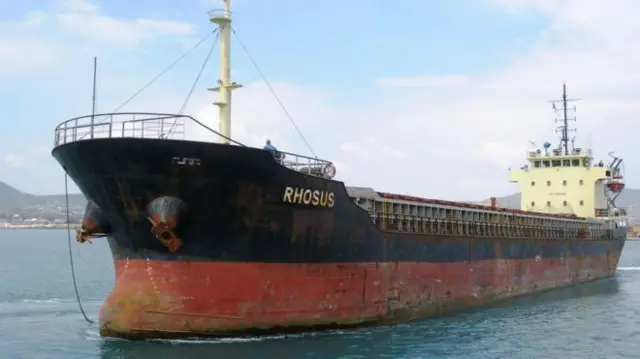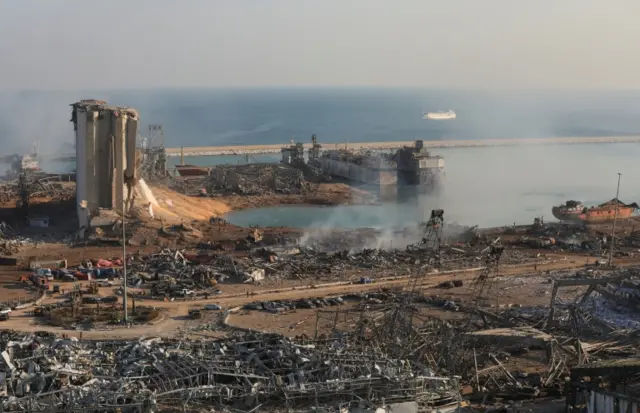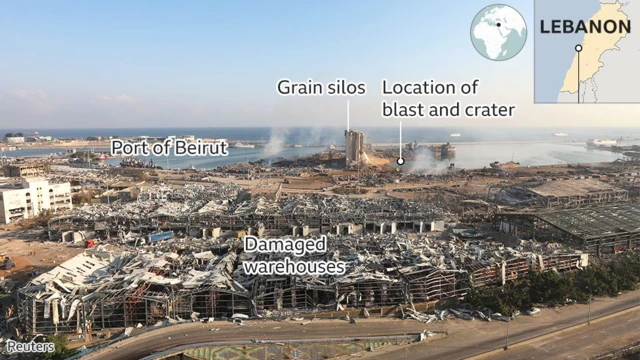How a ship's deadly cargo ended up in Beirut's portpublished at 11:27 BST 7 August 2020
 Image source, EPA/TONY VRAILAS/MARINETRAFFIC.COM
Image source, EPA/TONY VRAILAS/MARINETRAFFIC.COMThe MV Rhosus arrived at the port in 2013 carrying 2,750 tonnes of ammonium nitrate
How did disaster strike Beirut? Well, the huge blast that devastated parts of the city has been blamed on the detonation of 2,750 tonnes of ammonium nitrate stored at the port.
People have expressed anger and disbelief that such a large quantity of potentially explosive material was kept inside a warehouse without any safety measures for more than six years, so close to the centre of the city.
The government has not named the source of the ammonium nitrate, but the same amount of the chemical arrived in Beirut in November 2013 on a Moldovan-flagged cargo ship, the MV Rhosus.
Read more here about how the cargo is thought to have arrived in Lebanon.



